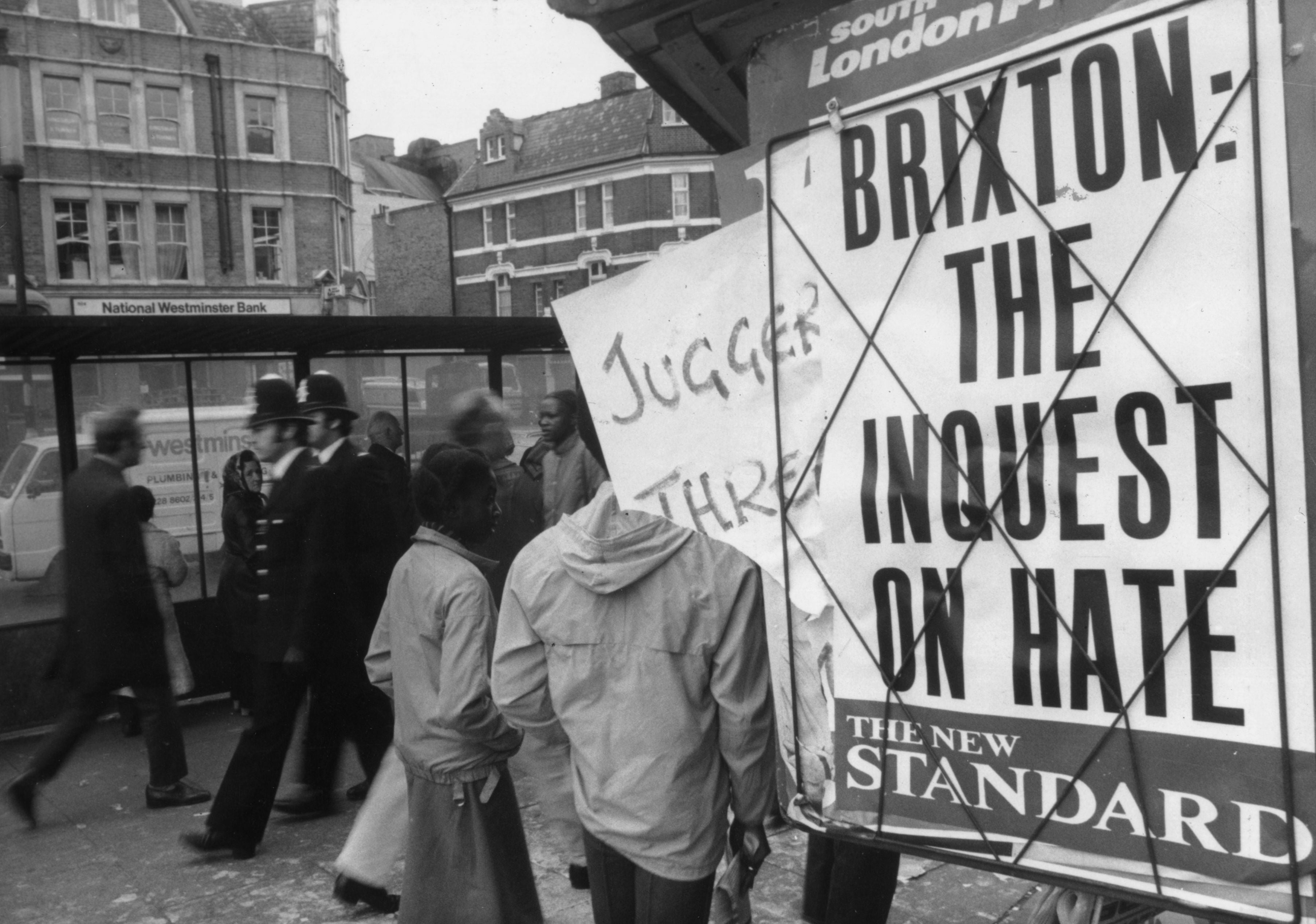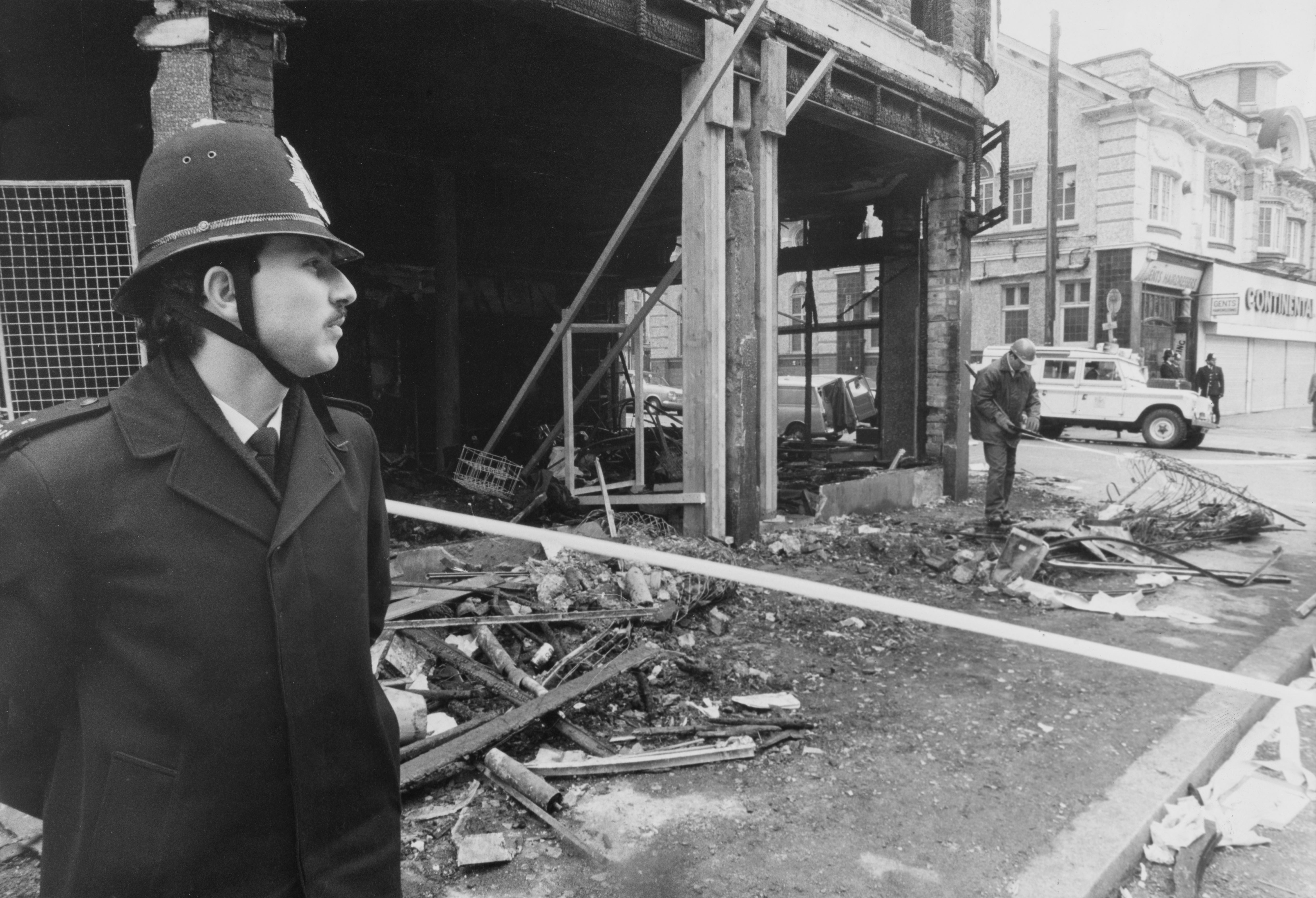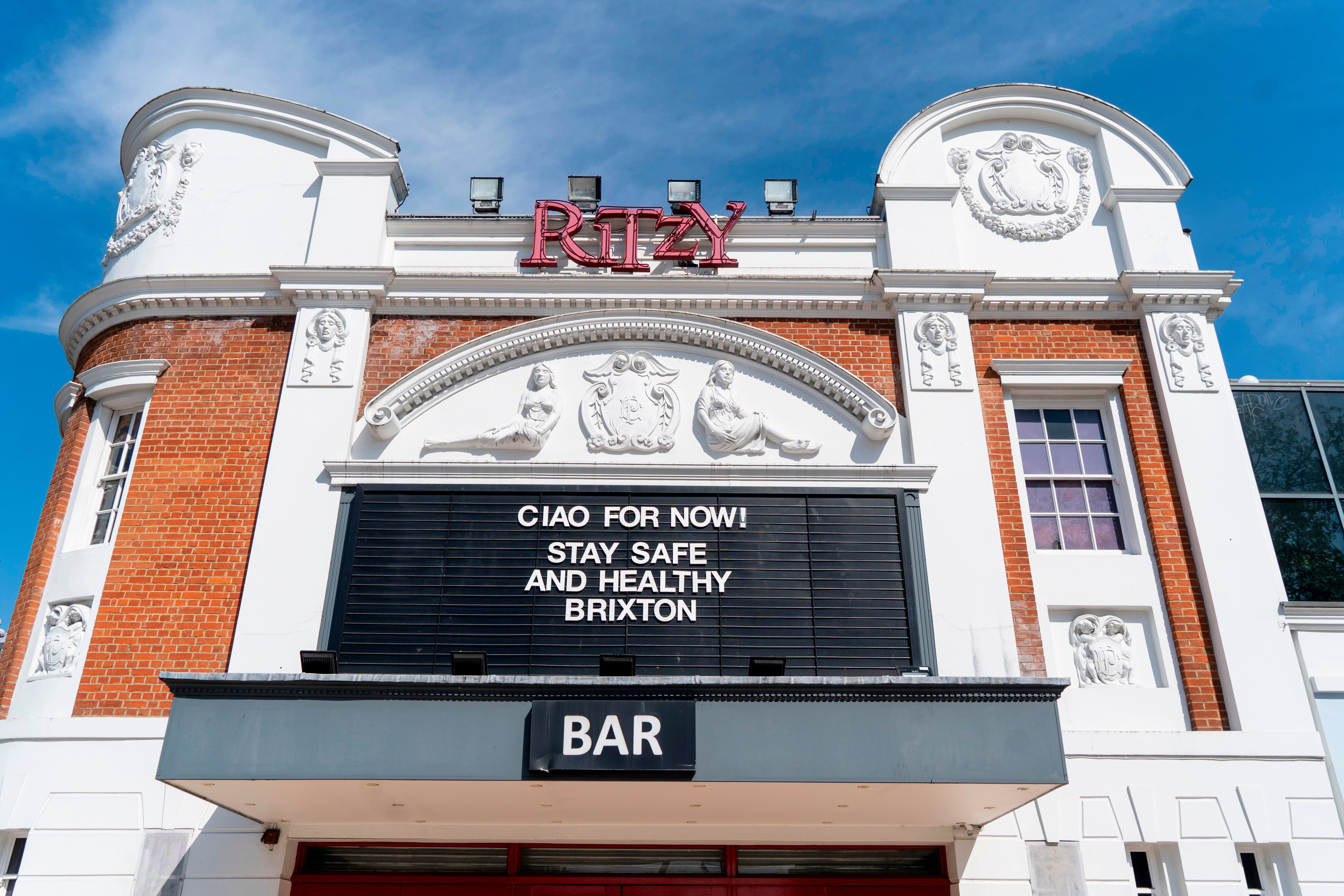The Independent's journalism is supported by our readers. When you purchase through links on our site, we may earn commission.
Forty years after the infamous riots, Brixton’s Black community is being suffocated
The people who rebuilt Brixton from the ashes in the aftermath of the riots are being forced out – make no mistake, the council are the biggest winners of the post-riot boom


Your support helps us to tell the story
From reproductive rights to climate change to Big Tech, The Independent is on the ground when the story is developing. Whether it's investigating the financials of Elon Musk's pro-Trump PAC or producing our latest documentary, 'The A Word', which shines a light on the American women fighting for reproductive rights, we know how important it is to parse out the facts from the messaging.
At such a critical moment in US history, we need reporters on the ground. Your donation allows us to keep sending journalists to speak to both sides of the story.
The Independent is trusted by Americans across the entire political spectrum. And unlike many other quality news outlets, we choose not to lock Americans out of our reporting and analysis with paywalls. We believe quality journalism should be available to everyone, paid for by those who can afford it.
Your support makes all the difference.South London was my first home after arriving as a child in the UK from South America with my parents and siblings in the early 1960s. Invited by the Queen, no less, to help rebuild the motherland after the war, we would be welcomed with open arms, or so we thought.
We were in for some big surprises.
After years of scrimping and saving with six children, Mr and Mrs Thompson from Georgetown, Guyana, saved enough to move to the edge of rural Surrey in Thornton Heath. But as a young adult, I came to learn that there was something peculiarly captivating about the eclectic smells and sounds of a place just down the road, a place where no self-respecting young woman would be seen at night, even though it was just a bus ride away… Brixton.
Brixton was the epicentre of everything cool, hip and trendy, while at the same time forbidden. Edgy, raw, and mesmerising, it was the place to be. As soon as I had an opportunity to work there, I grabbed it with both hands and eventually moved to Brixton, where I live to this day.
But not long after I had started enjoying the headiness of the area, the Brixton riots occurred. At the time I had offices above the The Body Shop, directly across from the station, with a bird’s-eye view of the rioters running up and down Brixton High Road, shouting at the police, breaking into shops. There was looting by some opportunists. I wondered whether our offices were next on the list.
I watched the police on horseback going down into the Tube station, and police cars being wrecked and set on fire. Some shops were forewarned and had boarded up their large glass plate windows, but it did not help. Complete mayhem ensued. It was one of the scariest, but dare I say it, exhilarating, moments in my life. I was watching history in the making from the safety of my offices above the riots. In fact, I later found out that the police had secured the use of the office next to mine to use as a surveillance point.
The riots, which began 40 years ago today, showed that Brixton had had enough. It was time for change – and life as we know it in Brixton would never be the same.
The riots were prompted by the New Cross massacre in January 1981, in which 13 young black people lost their lives after a petrol bomb was thrown through a window at a house party. Outraged by what had happened, community activists organised a historic Black Peoples Day of Action March, which took place on 2 March 1981. Departing from the Moonshot Community Centre in New Cross, over 20,000 people joined.
Tempers were still simmering in Brixton after the first demonstration. Tension was palpable when a police car crawled past, its occupants peering at the faces of Black residents walking by.
What led to the start of the unrest was said to be a group of young Black men accosting police officers in Brixton, while they were coming to the aid of another Black man. Later, we learned that this stop was part of Operation Swamp. This was a plain clothes police operation that included the infamous Sus Law, which gave police powers to stop, search and potentially arrest a person just on suspicion of committing a crime.
Police knew another march was planned and were allegedly trying to arrest the organisers. Two days of rioting ensued in April 1981.

Lord Scarman’s report into the disturbance stated that there were complex, socio-economic and political factors that ignited the riots. Although it highlighted racial disadvantage, however, the report stopped short of blaming the police for the riots or recognising institutional racism as an aggravating factor.
In the years after the riots, the council and government agencies worked hard to attract businesses to the area. Some say they offered heavily incentivised rates to attract business to Brixton. With their help and the constant ingeniousness of local traders, as well as iconic shops like Red Records and Morleys, shoppers from outside Brixton began to visit. Brands such as the Brixton Academy, Choice FM and The Voice newspaper based themselves in the heart of Brixton and told everyone who would listen that they were proud of the association. Aided by some good old-fashioned community activism, Brixton slowly rose from the ashes.
I have worked in Brixton since 1980. In 1990, I became a resident. Brixton has seen many changes during these times and I have witnessed most of it.
In 1999, a nail bomb attack in the heart of Brixton took three precious lives and injured 140 people. The aftermath showed the country that we are more than what divides us, as we pulled together as one.
But there were good memories, too. In 1996, I had the pleasure of meeting South Africa’s first Black president and anti-apartheid icon, Nelson Mandela. Over 10,000 people crowded the streets of Brixton to see him. In 2005, Jesse Jackson, a consistent face of the civil rights movements in the US visited Brixton. In 2000, I had a ringside seat for Mike Tyson’s visit to Brixton. He famously said: “If you’re an African-American or you’re a Black man from any part of the world and you come to London, you go to Brixton to see your people out of respect for them alone.”
Those words from the world heavyweight champion echoed throughout Brixton. It reminded us that our grit and determination to love where we live, despite the “deprived murder capital” and “ghetto” tags, was recognised.
The transformation started back in the 80s. The then Electric Cinema (now the Ritzy), previously known for late-night showings of porn films and the latest Kung Fu movies, began to attract a cult following, and encouraged more arts and culture to the area.
Choice FM (now CapitalXtra), which in 1990 became the first Black legal radio station in the UK, made its home in Brixton. Soon, people like Puff Daddy, Bobby Brown, Freddie McGregor and other icons of R’n’B, soul and reggae, were frequent visitors to Brixton. Incidentally, Choice FM’s HQ in Brixton was recently awarded an English Heritage Blue Plaque. This was to mark the 31st anniversary after dropping its first broadcast of Black music to the metropolis and went on to gain a larger license in Birmingham.
With The Voice newspaper, Choice FM radio station, The Ritzy, and the latest club on the scene, The Fridge, the transformation of Brixton had begun.

But it has been over the last 15 years that I have witnessed Brixton undergo a real social and physical transformation. The top three coffee shops suddenly lined up practically next to each other on the high street; likewise the top four phone companies; then H&M and even Foxtons appeared. Alongside the refurbishment of the Brixton tube, which has become the gateway to central London from the south, there was no going back. Brixton was suddenly recognised as the south-side place to be.
Effective regeneration in my mind is where the physical environment and the people within that space benefit from the improvements. Those improvements could be better housing, better education and skills, better facilities, improved life expectancy and better community safety.
This is not that. What it is, is government-sponsored gentrification, moving the families that supported the area either “back home” or further to the outskirts of south London where living might be a bit more affordable.
What else would you call the displacing of a section of the community to be replaced by a more economically viable one? Who in turn will benefit from the environmental and social improvements? Make no mistake about it, in the internet age, Brixton is prime land, which is a far cry from what it was when our ancestors from the Windrush generation arrived. Its proximity to the city and transport routes to the southern coast makes Brixton an attractive locale for those who work in or around the city or who are attracted by it.
But I keep asking myself, why are those people who were part of the aftermath of the riots and responsible for giving Brixton its cultural heritage and relevance, not part of renewal?
Those businesses who gambled and took the incentives to relocate to Brixton when times were bad face crippling rates and have effectively been forced out. No loyalty; no reward. Social establishments, which for decades embraced Brixton’s LGBTQ community, were unceremoniously forced out because of some notion that Brixton requires a boutique hotel.
Make no bones about it, the council are the biggest winners of the post-riot boom, not the community. Their motto seems to be to cater for those residents who are to arrive in Brixton, as opposed to those who already exist. The council, when you need them, are like the Great North Wall in Game of Thrones. You know they are out there; you just can’t see them. An enabling council they are not; their focus appears to be solely compliance and property development, not serving the community that pays them.
So, has Brixton changed since Lord Scarman reported on the riots? The answer: it’s complicated. I love where I live. I have fabulous neighbours where we enjoy a strong community spirit. But with new “affordable” housing popping up what seems to be by the week, and with the onset of a new breed of the night-time economy, it continues to attract a new generation of socially and upwardly mobile people.
However, bit by bit, we are being suffocated. In my opinion, an overly zealous authority is destined to turn every available space into “affordable housing”, with little attention to the amenities, cultural and social spaces to support the growth.
The Sewell Report published recently stated that there is no institutionalised racism in the UK. Tell that to the young Black Brixton man who is 26 per cent more likely to be remanded in custody than his white counterpart for a similar offence.
Yes, Brixton has changed. Before lockdown, my husband and I took a stroll to Brixton village, part of the Brixton market. We decided to have a bite to eat at one of the restaurants and for the whole 90 minutes we were there, we were the only Black people in that part of the Village – except for the security guards. The 80/20 rule had switched on us! Across the road, we stared at a huge billboard advertising a new high rise housing development in Brixton. I was not surprised to see the sign asking people to come to live in Brixton. There were half a dozen smiley faces. I was also not surprised to see that none of them was Black.
Will there be other high-profile heads of states and international dignitaries come to visit Brixton in the future? I doubt it. Sound like a familiar story? Harlem comes to mind.
Dr Yvonne Thompson CBE is founding director of Choice FM
Join our commenting forum
Join thought-provoking conversations, follow other Independent readers and see their replies
Comments